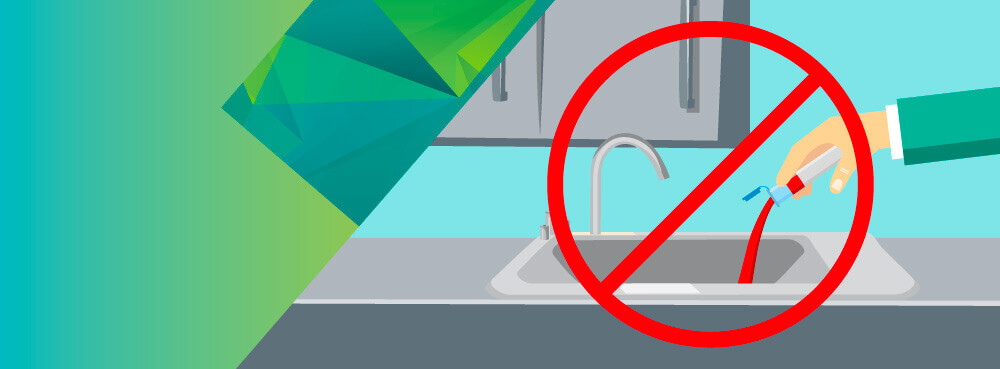Ingenious Industrial Wastewater Treatment Solutions: Safeguarding the Environment
Wiki Article
Just How Fluid Garbage Disposal Works: A Thorough Summary of Techniques and Technologies Employed

Summary of Fluid Waste Kind
The complexity of liquid waste types requires a complete understanding of their features and ramifications for disposal. Liquid waste can broadly be classified right into a number of types, including commercial, community, farming, and harmful waste. Each group shows distinctive buildings, requiring specific monitoring strategies to minimize environmental and health and wellness threats.
Industrial fluid waste originates from manufacturing procedures and typically consists of a series of pollutants, such as hefty metals, solvents, and natural substances. Local liquid waste, primarily making up wastewater from families and commercial establishments, contains natural issue, nutrients, and pathogens (industrial wastewater treatment). Agricultural fluid waste, consisting of runoff from ranches, may include fertilizers, pesticides, and animal waste, posturing dangers to water high quality and ecosystems
Hazardous fluid waste is identified by its poisoning, sensitivity, or possible to cause harm. Comprehending these varied fluid waste kinds is critical for creating efficient disposal techniques and making sure compliance with environmental policies.
Physical Therapy Approaches

Screening is the first step, where bigger particles and particles are gotten rid of from the liquid waste making use of screens or grates. In sedimentation tanks, larger bits clear up at the bottom, creating a sludge layer, while the made clear fluid can be more dealt with.
Purification is one more crucial approach that entails passing the liquid via permeable products, such as sand or membranes, to catch smaller sized fragments. This action boosts the top quality of the liquid, making it ideal for subsequent treatment processes.

Chemical Therapy Techniques
Chemical treatment strategies are important for effectively managing liquid waste, specifically in dealing with liquified and colloidal pollutants that physical methods might not properly eliminate. These strategies make use of different chemical representatives to counteract, speed up, or transform unsafe compounds right into much less unsafe kinds.One usual method is coagulation and flocculation, where chemicals such as alum or ferric chloride are included in advertise the aggregation of suspended fragments. This process improves sedimentation, permitting for easier elimination of the resulting sludge. In addition, check my site oxidation procedures, utilizing representatives like chlorine or ozone, are used to break down intricate organic compounds and microorganisms, making the waste more secure for discharge or additional therapy.
Neutralization is another crucial strategy, which readjusts the pH of acidic or alkaline waste streams to neutral levels, protecting against prospective harm to downstream systems and the atmosphere. Additionally, advanced oxidation procedures (AOPs) use combinations of oxidants and ultraviolet light to weaken relentless contaminants, attaining a greater level of therapy performance.
Biological Therapy Processes
Biological therapy processes play an important duty in the management of liquid waste by utilizing microbes to disintegrate natural issue and minimize impurity degrees. These procedures can be generally classified into anaerobic and cardio treatments, each utilizing certain microbial my explanation areas to accomplish efficient waste degradation.Aerobic treatment entails the use of oxygen to facilitate the breakdown of organic products by bacteria. This process is commonly carried out in activated sludge systems, where oygenation storage tanks provide a conducive atmosphere for microbial growth, causing the oxidation of natural pollutants. The resultant biomass can be divided from treated effluent through sedimentation.
In contrast, anaerobic therapy happens in the absence of oxygen, counting on various microorganisms to break down raw material. This technique is especially helpful for high-strength waste, as it creates biogas, a renewable resource resource, while reducing sludge manufacturing. Technologies such as anaerobic digesters are frequently utilized in metropolitan and commercial applications.
Both anaerobic and aerobic organic therapies not just lessen the ecological effect of liquid waste yet additionally promote resource healing, making them crucial parts of lasting waste monitoring approaches. Their versatility, performance, and efficiency support their extensive implementation across different industries.
Arising Technologies in Disposal
Ingenious methods to liquid waste disposal are swiftly progressing, driven by advancements in technology and a raising emphasis on sustainability. Amongst these emerging innovations, membrane bioreactors (MBRs) have actually gained traction for their ability to combine organic treatment with membrane layer purification, resulting in top notch effluent that can be recycled in different applications. MBRs allow smaller footprints and much more effective operations compared to typical systems.An additional appealing development is using anaerobic food digestion incorporated with nutrient healing technologies, which not only deals with fluid waste yet also produces biogas and recuperates useful nutrients like nitrogen and phosphorus. This twin benefit boosts resource efficiency and lowers ecological effect.
Additionally, advanced oxidation procedures (AOPs) are being taken on for the destruction of complicated natural contaminants. These techniques utilize effective oxidants and catalysts to break down pollutants at the molecular degree, supplying an extremely efficient option for tough waste streams.
Additionally, the assimilation of expert system and maker discovering in waste management systems is optimizing operational performance and anticipating upkeep, resulting in decreased expenses and boosted environmental compliance. These modern technologies show a considerable change towards more sustainable and reliable fluid waste disposal methods.
Final Thought
In conclusion, efficient liquid waste disposal demands an extensive understanding of various strategies and innovations. By continuously advancing these methods, it my website becomes feasible to address the expanding challenges associated with liquid waste, ultimately contributing to environmental security and resource recovery.Liquid waste disposal is a critical element of environmental monitoring, needing a detailed understanding of various strategies and technologies tailored to various waste kinds. Liquid waste can extensively be categorized right into several kinds, consisting of industrial, community, farming, and unsafe waste. Agricultural fluid waste, including overflow from farms, might consist of fertilizers, pesticides, and pet waste, positioning dangers to water high quality and ecosystems.
Different physical treatment methods play a vital duty in managing fluid waste successfully - industrial wastewater treatment.In final thought, effective fluid waste disposal demands a comprehensive understanding of various techniques and innovations
Report this wiki page